Top 6 Open-Source Jaeger Alternatives [comparison 2025]
Jaeger, a renowned distributed tracing system, has been a trusted companion for developers and operations teams seeking to unravel the complexities of microservices architectures.
However, as the landscape continues to evolve, the time has come to explore Jaeger alternatives that offer distinct features and advantages. For a comprehensive overview of available options, see our guide to distributed tracing tools.
Uptrace
Uptrace is an open source APM for OpenTelemetry that supports distributed tracing, metrics, and logs. You can use it to monitor applications and troubleshoot issues.
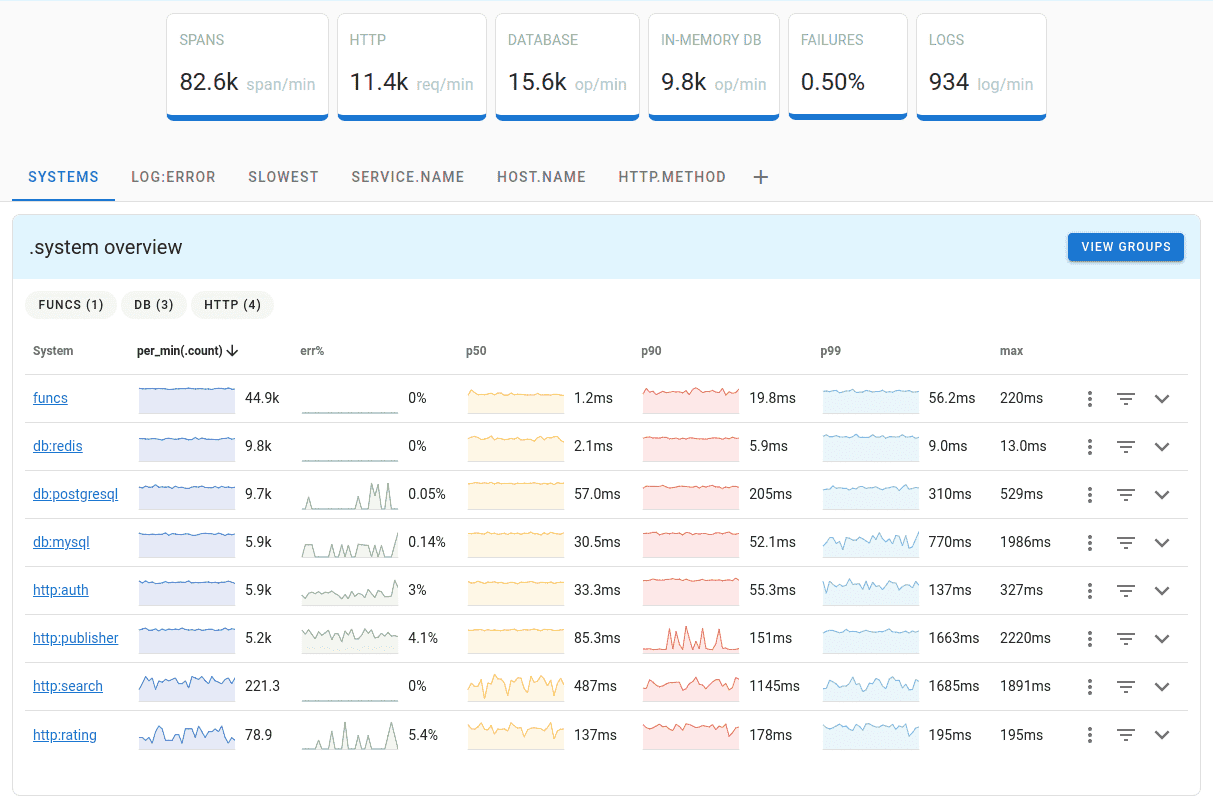
Uptrace provides an interactive query interface that allows you to explore your trace data using ad hoc queries and visualizations. This gives you the flexibility to investigate specific questions and correlations.
Uptrace is designed to handle high-cardinality data, meaning it can capture and analyze a large number of unique attributes and dimensions for each trace. This makes it particularly effective for exploring and debugging complex systems.
Uptrace offers both SaaS and on-premises deployment options, allowing you to choose the setup that best fits your organization's needs and security requirements.
Uptrace includes alerting capabilities based on query conditions, allowing you to set up notifications when specific conditions are met in your trace data.
SkyWalking
SkyWalking is designed for cloud-native and microservices architectures. It's especially suited for monitoring and tracing complex, dynamic and distributed systems.
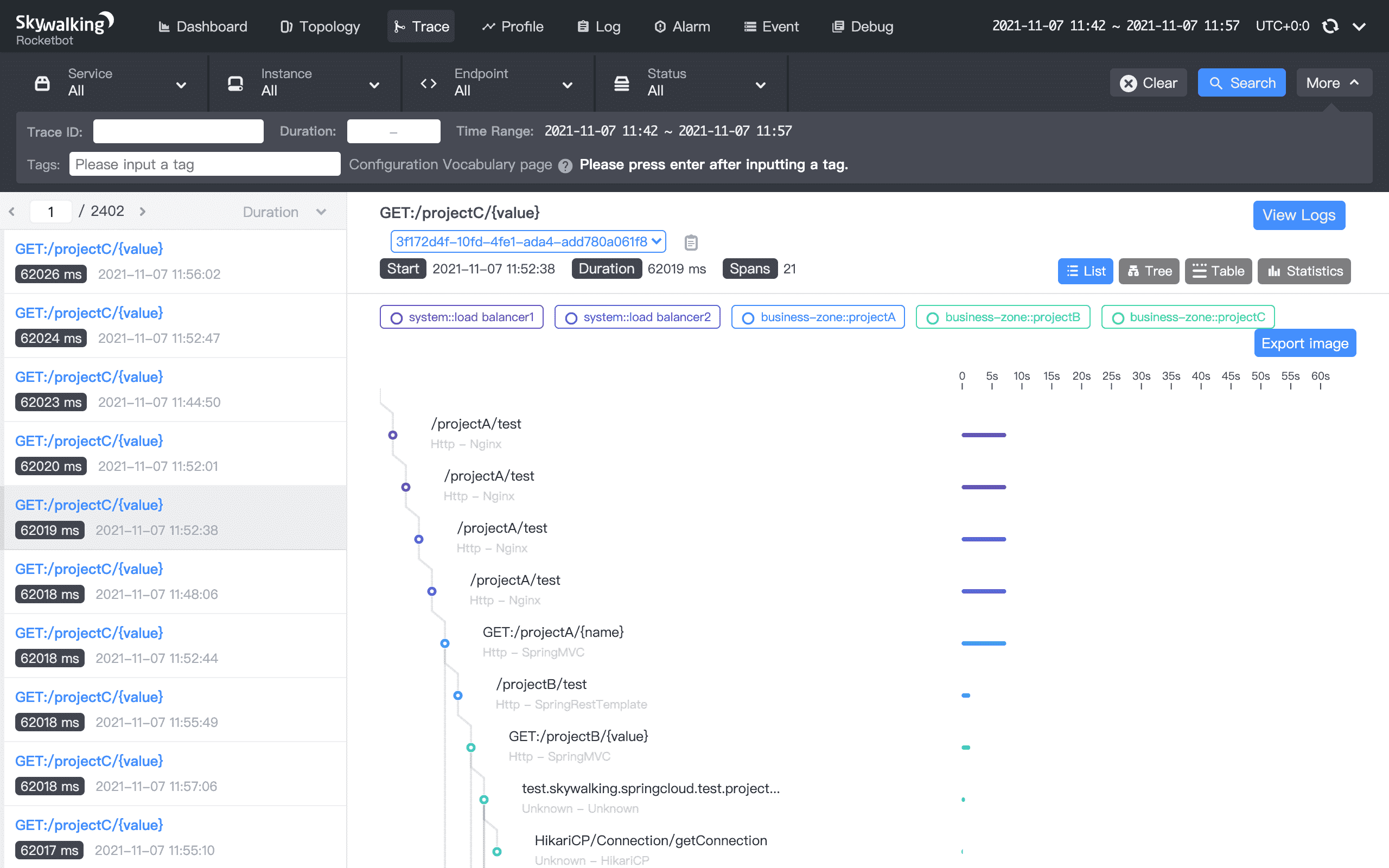
Like Jaeger, SkyWalking provides distributed tracing capabilities, allowing you to trace the flow of requests through different services and components.
In addition to distributed tracing, SkyWalking also provides metrics collection and application performance monitoring (APM) capabilities.
SkyWalking supports a variety of storage backends, including Elasticsearch, MySQL, and TiDB. This flexibility allows you to choose the storage solution that best fits your needs.
SkyWalking provides alerting capabilities to notify you of performance anomalies or threshold violations. It also includes analysis tools to diagnose performance problems.
Signoz
Signoz is an open source, distributed tracing and observability platform. It's designed to help developers monitor and troubleshoot the performance of microservices-based applications.
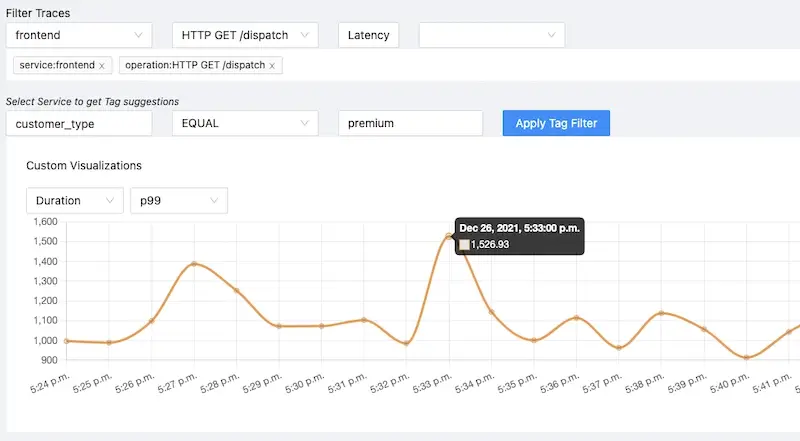
Signoz helps you identify bottlenecks, latency issues, and other performance problems in complex systems by providing insights into the interactions between different services.
Signoz allows to capture traces of requests as they flow through different services and components of your application. This helps you to visualize the flow of requests and to understand the amount of time spent at each step.
Signoz can provide metrics collection and visualization, allowing you to track various performance metrics and gain insights into the behavior of your application.
To help you understand how different services interact and depend on each other, Signoz can automatically generate service dependency maps.
Grafana
Grafana is an open source monitoring, visualization, and analytics platform. It's widely used to create customizable dashboards and visualizations of various types of data, including metrics, logs, and events.
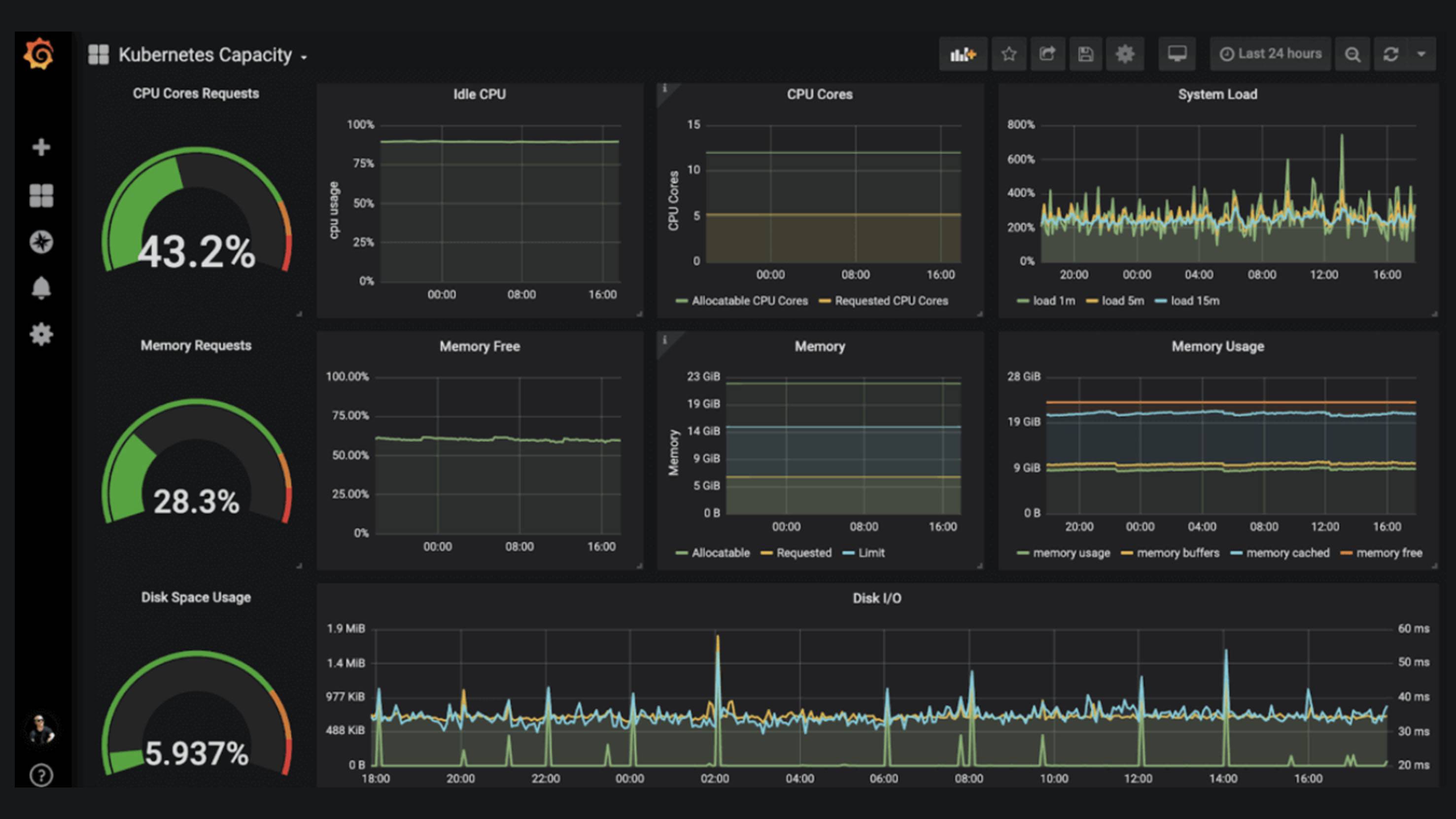
Grafana is primarily used to create visual representations of data such as time series metrics, logs, and other monitoring data. It supports multiple data sources, including popular time-series databases such as Prometheus and InfluxDB.
Grafana allows you to design dashboards with widgets, charts, graphs, and text panels to display data in the way that's most meaningful for your use case.
Grafana provides alerts that notify you when certain conditions or thresholds are met in your data. This can help you proactively address issues.
Grafana supports integration with multiple data sources, allowing you to consolidate data from different systems into a single dashboard.
Zipkin
Zipkin is a distributed tracing system that helps monitor and troubleshoot the performance of microservices-based applications by tracking the flow of requests through different services.
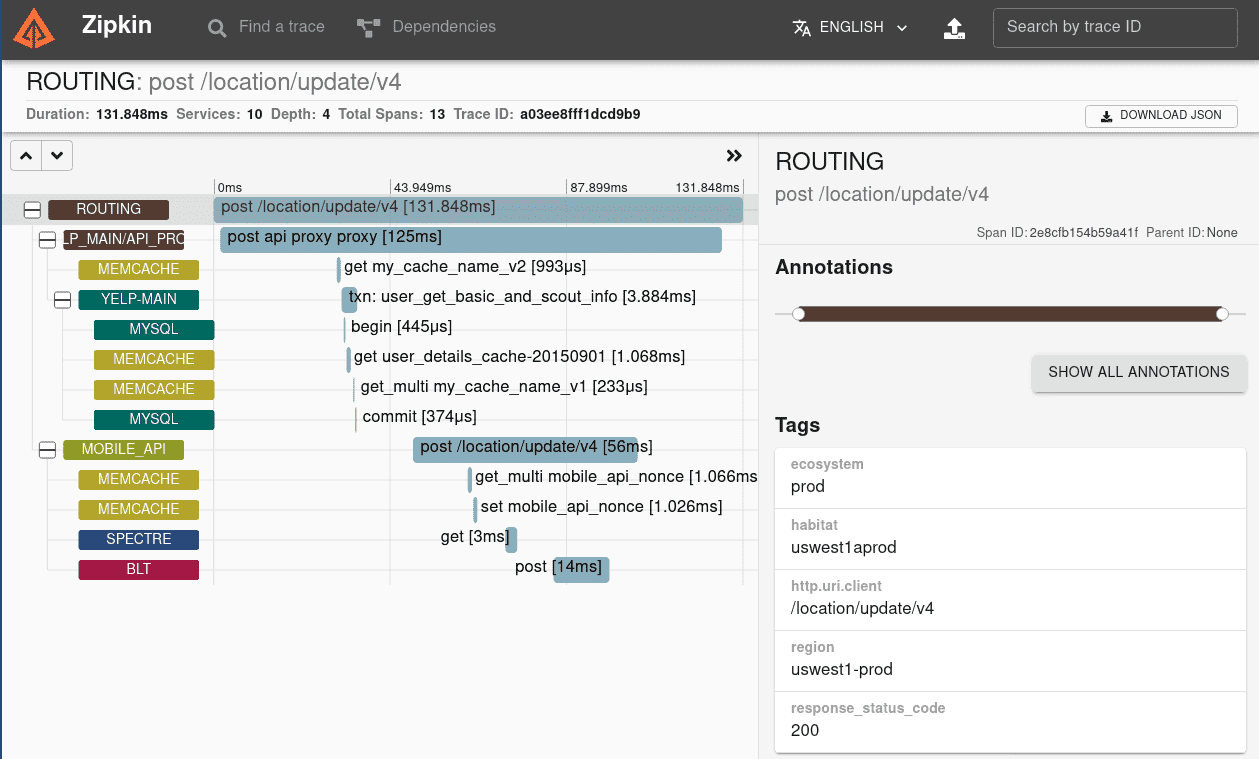
Zipkin is known for its simplicity and ease of setup. It's relatively easy to get started with Zipkin, making it a good choice for teams looking for a lightweight solution.
Zipkin provides a web-based interface that allows you to visualize and explore trace data. While the interface may be less feature-rich than some other solutions, it provides the necessary tools for basic trace analysis.
Zipkin can store trace data in a variety of storage backends, including in-memory, MySQL, Cassandra, Elasticsearch, and more.
Zipkin has an active open source community, and while its ecosystem may be smaller than some alternatives, it's a reliable choice for basic distributed tracing needs.
OpenTelemetry
OpenTelemetry and Jaeger are related in that OpenTelemetry provides instrumentation libraries that can generate traces and integrate with various tracing backends, including Jaeger.
This means that you can use OpenTelemetry to instrument your application code and send trace data to Jaeger for analysis and visualization.
See Jaeger vs OpenTelemetry for details.
How to choose Jaeger alternative?
Choosing a Jaeger alternative involves a thoughtful assessment of your organization's specific needs and goals for distributed tracing and observability.
Start by understanding your primary use cases – whether it's troubleshooting performance bottlenecks, optimizing latency, or gaining insights into complex interactions.
Evaluate the features and capabilities offered by alternatives, focusing on factors like ease of integration, scalability, customization, and analytics.
Consider the ease of implementation, learning curve, and community support. Test alternatives in a controlled environment to ensure they align with your architecture and provide the level of visibility and insights required.
It's recommended that you set up a small evaluation environment to compare how each tool fits your use case and requirements.
You may also be interested in: